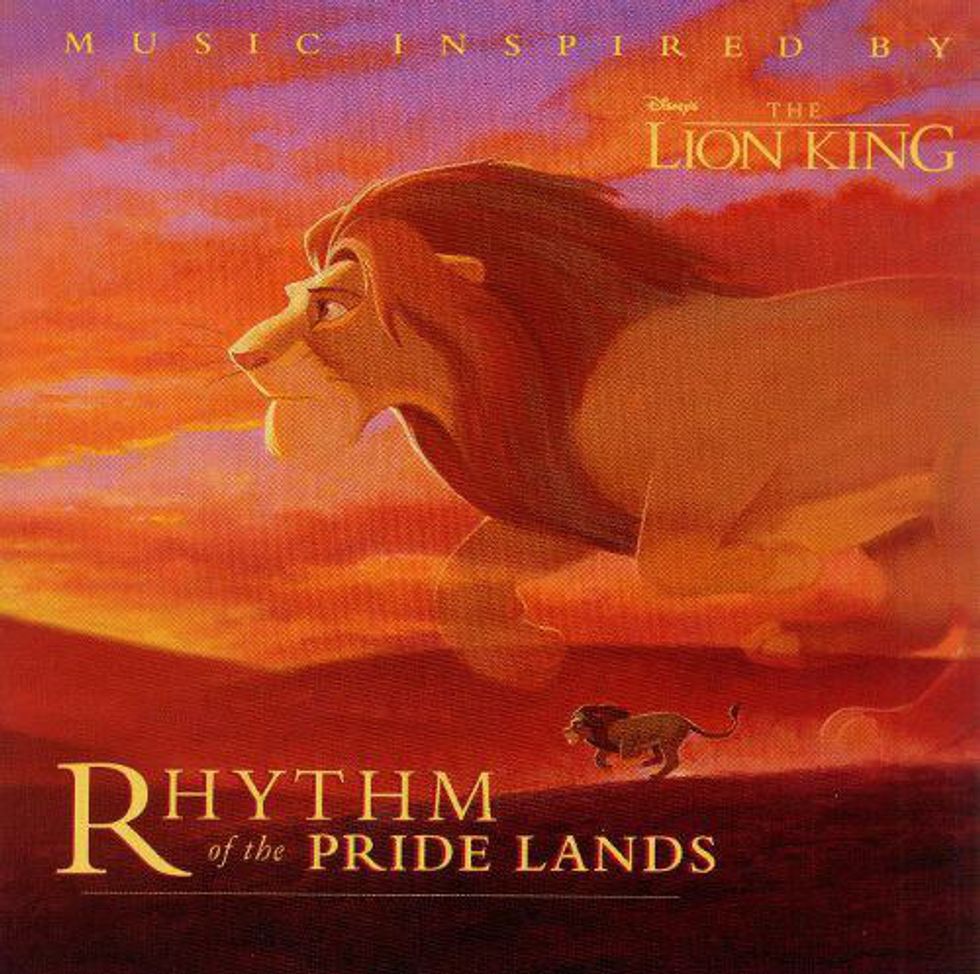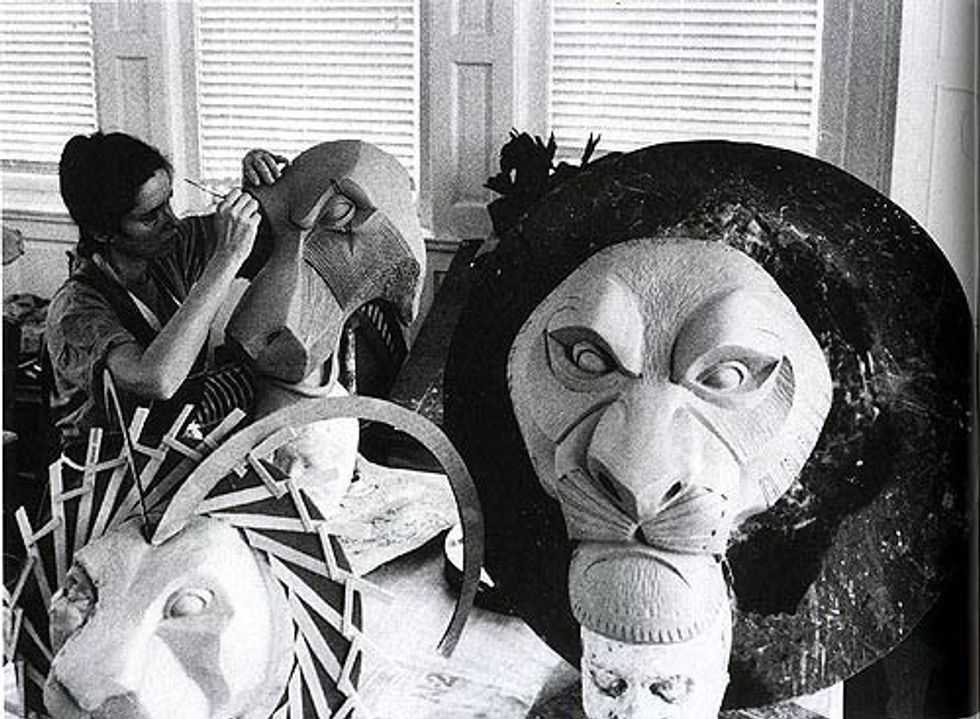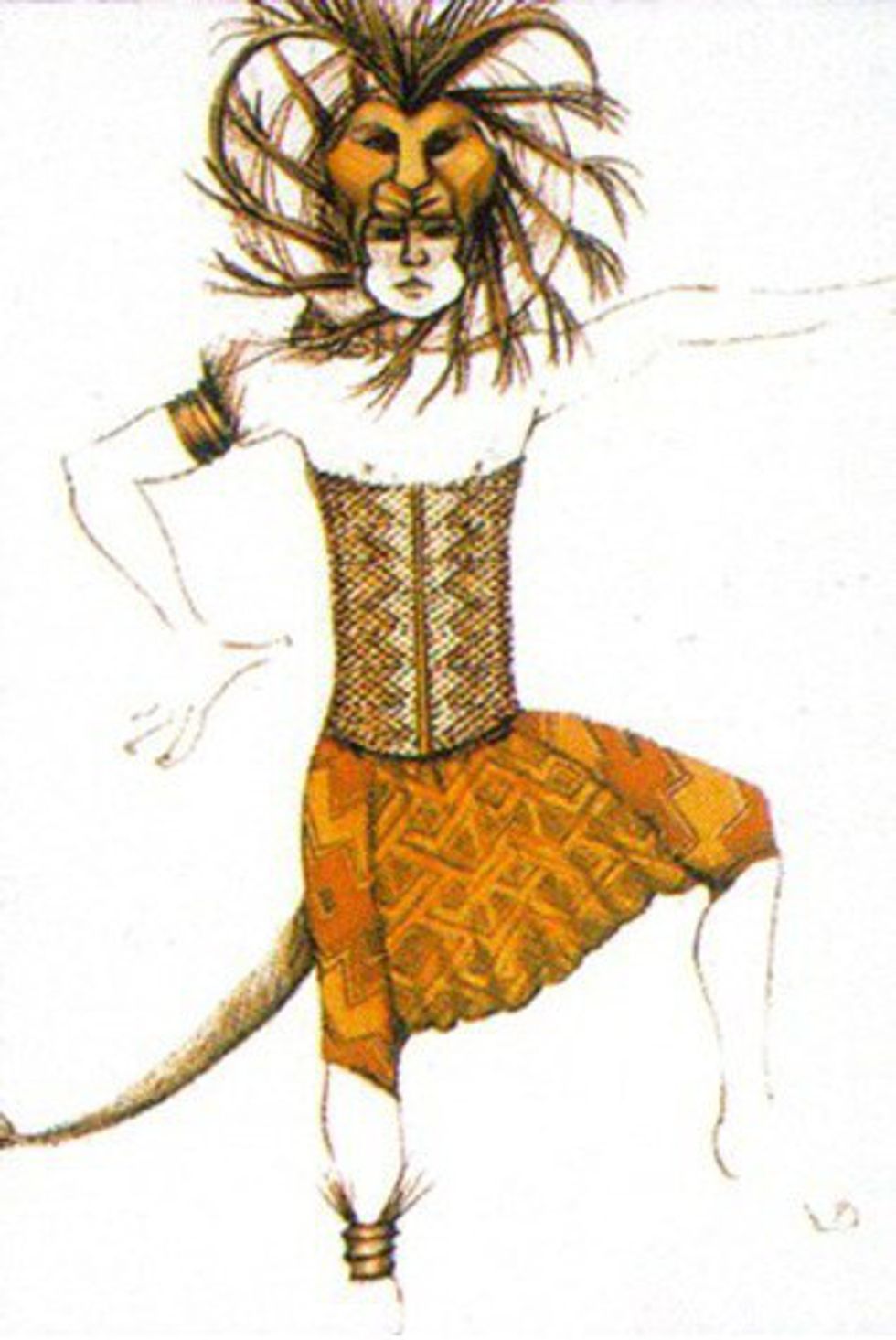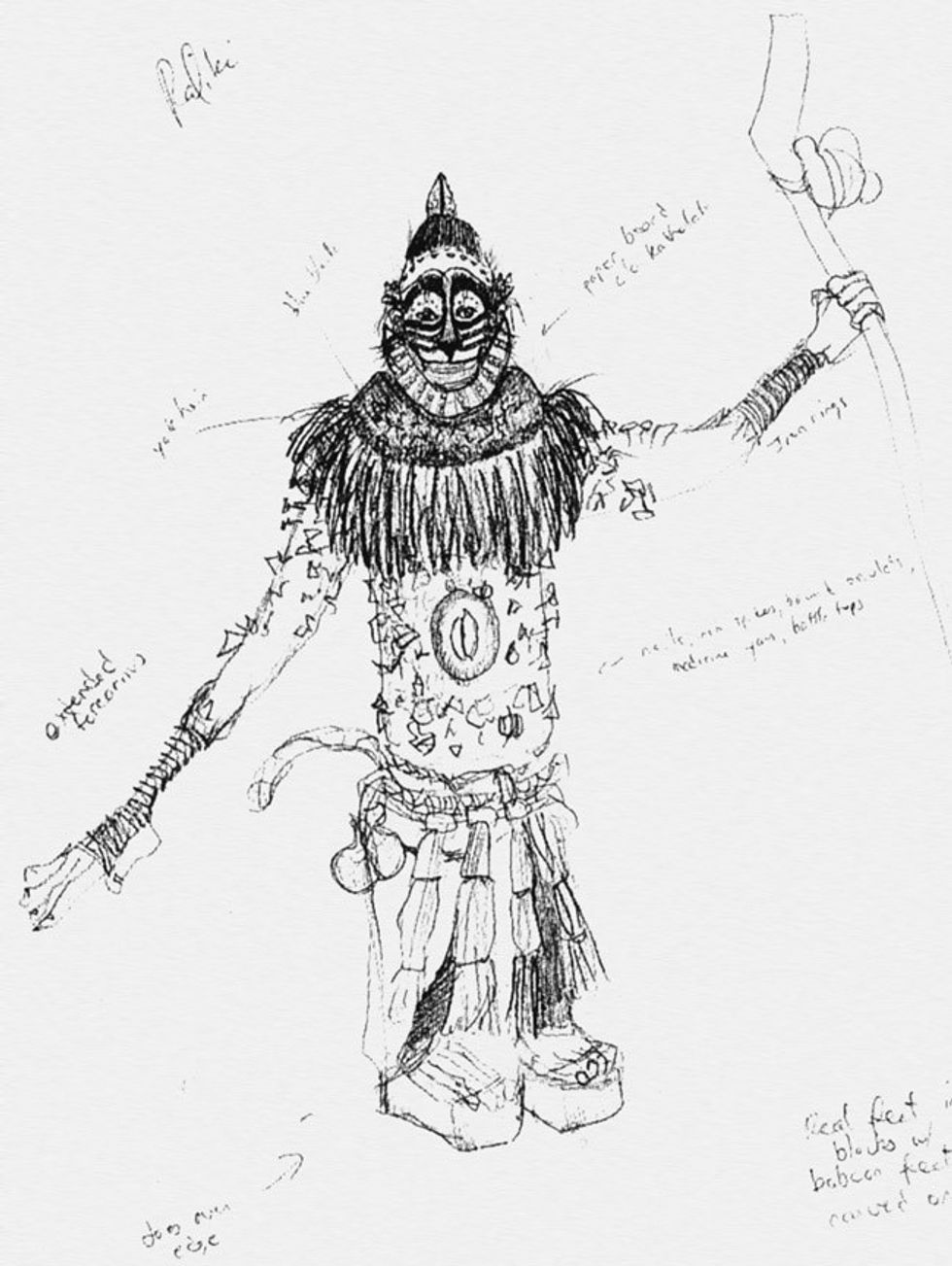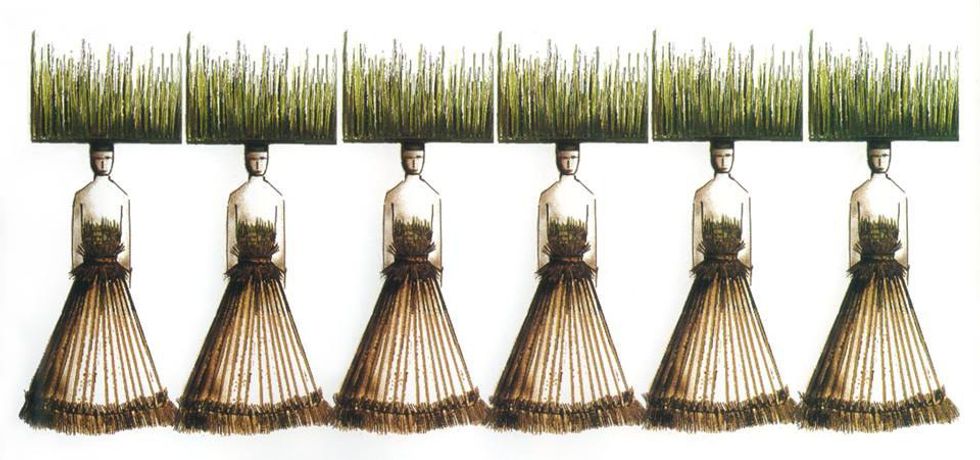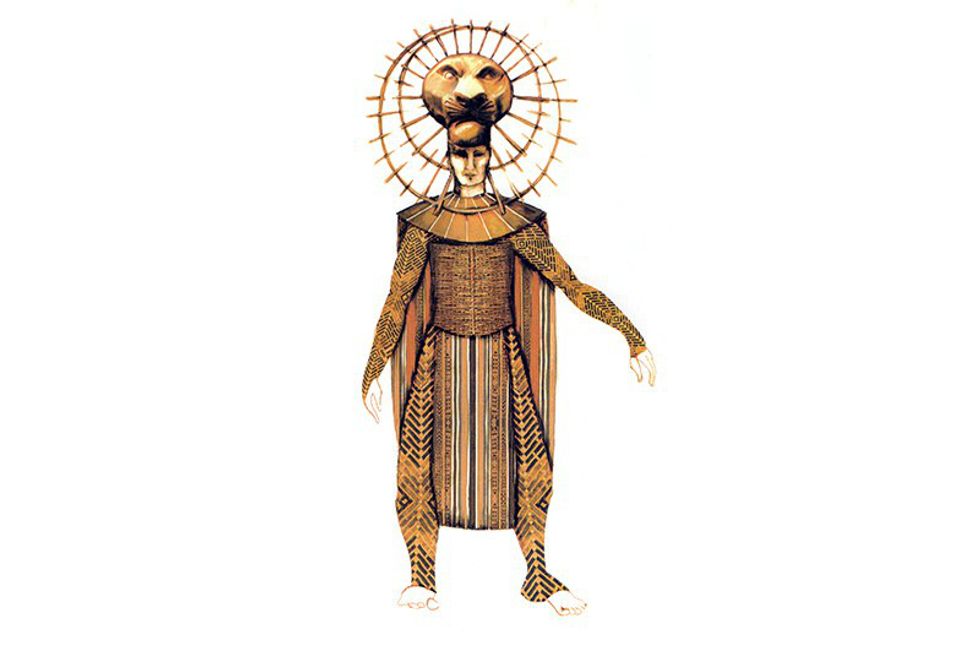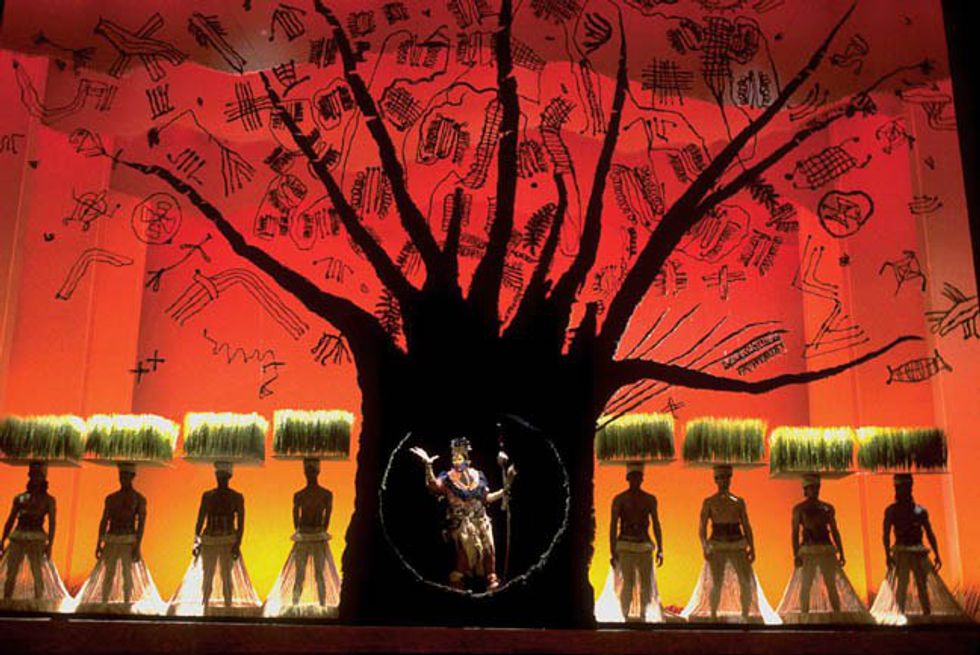I've been obsessing about Lion King as a Disney film since I was born, and for it to be in the form of a musical makes my obsession even bigger. I've yet to see the musical on Broadway but the Gods have answered my prayers as I've learned that the musical is making it's way to St. Louis, and will be located at the Fox Theatre early next year! Time to start taking on more work shifts! As my preparation for this lovely experience to come, I've been doing some outside of class research and have learned a lot about the thought process, collaborators, and numerous start overs that were part of it's success.
1.) 'Rhythm Of The Pride Lands' was a guide for the new music that was added.
Rhythm Of The Pride Lands was an album that was inspired by the film's score, composed by Hans Zimmer, Mark Manica and Lebo M.
(Above: The cover of Rhythm of the Pride Lands - album inspired by the film score)
2.) Originally, the character masks were supposed to act like shields instead of headpieces.
Believe it or not the headpieces that belong to Simba, Scar, and Mufasa were supposed to be held in the hands by the actors and used as shields when the actors were acting as the lions. The masks would live on the backpacks behind the actor. When needed the actor would reach back and pull the masks forward.
3.) Each masks has it's own characteristics. No mask is THE SAME!
Each of the masks were sculpted to have an expressions that matched the characters dominant trait. For example, Mufasa is very intimidating, powerful, strong an passionate which can be viewed in his mask by the facial balances of his masks.
(Above: Sculpting the clay form of Scar. Foreground: sculptures of Simba and Mufasa)
4.) The sketches of the costumes are simply amazing!
(Above: Simba as a teen)
(Above: Rafaki)
(Above: The Ensemble representing the Grasslands where Nala and Simba would frolic and play.)
(Above: Mufasa)
5.) Rafaki is a female!
Yay for feminism! The producers of the play felt as though the production lacked dominant female figures, so to fix this they spread their horizons and developed Rafiki as a female.
6.) The Original Broadway Actors Were...
Simba: Jason Raize
Nala: Heather Headley
Mufasa: Samuel E. Wright
Scar: John Vickery
Rafaki: Tsidii Le Loka
Timon: Max Casella
Pumbaa: Tom Alan Robbins
7.) Donald Holder was the Lighting Designer
"I really can't begin the process of designing the show - actually making a light plot - until the sets have been designed, because a number of technical choices depend on the scenery. I need to know where there will be room to hang lights, what color the scenery is, what the height of the scenery is going to be. But in the meantime, I do consult on the ground plan. In other words, I try to protect "real estate," to make sure that, once the set is designed and built, there is space for lighting instruments." - Donald Holder
(Above: The grasslands form around Rafaki and her mystical tree!)
8.) The first workshop was in Augusts of 1996, and the second in February 1997.
These workshops were a lot like... rough drafts of an 8 page paper. It's an opportunity for the directors, producers, costumers, lighting designers, actors, and dancers to see how the production looks once it's put together. Actors were finally able to work with the puppets, costumers were able to see how their costumes worked as the actors moved, etc... Of course for the first workshop there were things that did not work so well so they fixed all of the kinks and bumps just in time for the second workshop in February!
9.) The Lion King opened November 13th, 1997! WOO! Almost 20 years ago!
The Orpheum Theater in Minneapolis is where The Lion King performed the show for the first time.
10.) The music and lyrics were written by Elton John and Tim Rice.
Thank you for taking time out of your day to read this article! There's still more to come. If you enjoyed the information given here check out Julie Taymor's book The Lion King: Pride Rock of Broadway.




